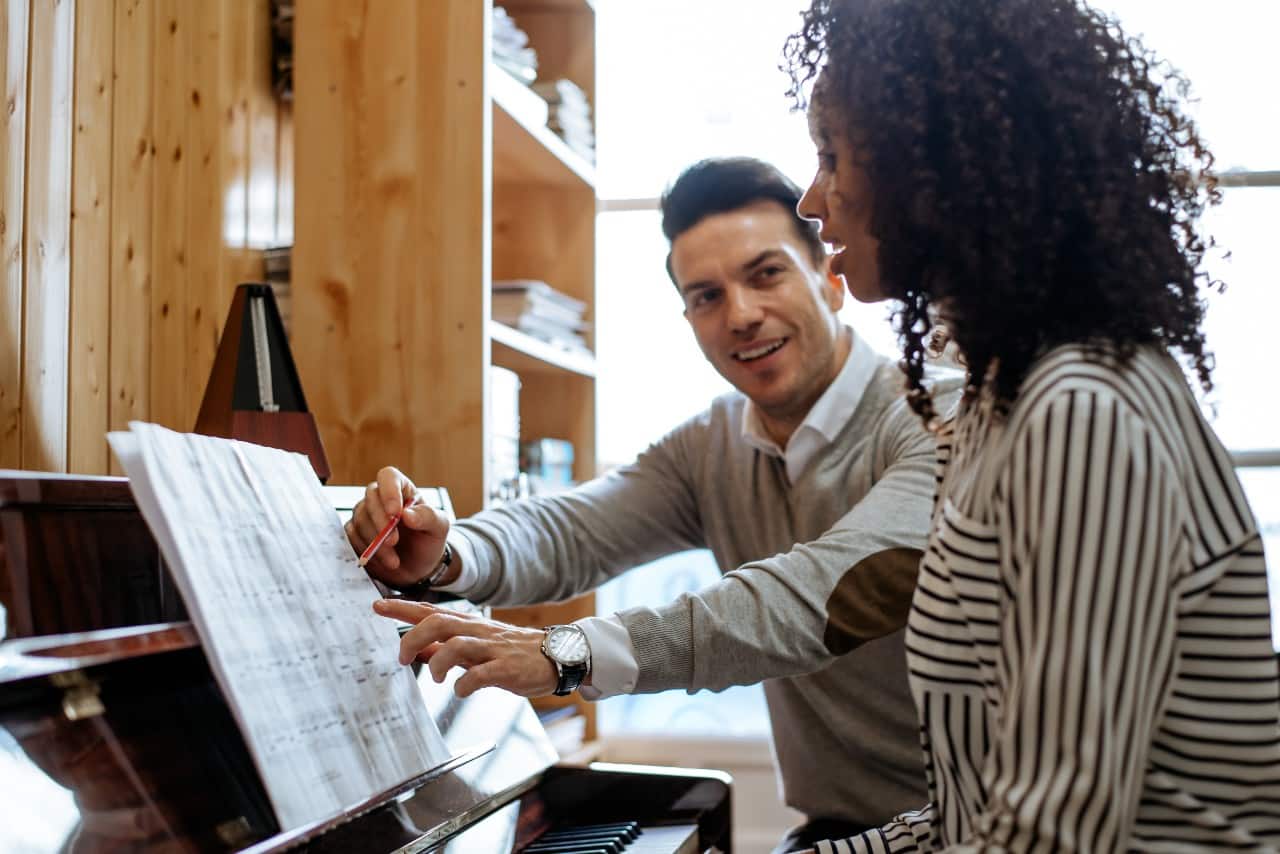
When music students learn a new piano piece, they may feel excited and frustrated all at the same time.
Marie Dvorkin from the Piano Forte Music School has a few tips to help any pianist, from beginner to advanced, smooth out those emotions and make the process of learning music a positive experience.
The first step in learning music happens before a student’s fingers ever touch the piano keys.
Look at the written music, Marie says. Notice the time and key signatures and be aware of the composer.
A Signature Please
The time signature gives a student a hint at the tempo and style of the piece. Music written in 4|4 time has a different feel than pieces written in 6|8 or 3|4 time.
Then note the key signature. Is the piece written in a major or minor key? What note incidentals does the student need to keep in mind?
The next step when students learn a new piano piece is to notice who wrote the music. The name of a composer should give the student another clue about the style of the piece. A Baroque sonata written by Johann Sebastian Bach has a totally different musical feel than a Romantic piano sonata written by Fryderyk Chopin.
As a beginner, students may not know what most of those terms and names mean, but that’s all part of learning to play the piano, right? Learning new music is another reason why students need to know music theory, which Marie stresses to every musician in her programs.
Time For The Notes!
Once the student notices the time and key signatures and the composer, he or she can start looking at the actual notes. Students may have noticed some tempo and dynamics notations on the music, but don’t worry about those just yet, Marie says.
Instead, focus on the notes and make sure the student’s fingers are on the correct piano keys. Having fingers in the correct position is important because the student’s hands need to move freely over the keys. If a student presses a key with the wrong finger, the movement over the keys won’t be as smooth as it should be.
Once the student starts to play, don’t try to make it all the way through the piece on the first try. Take the music a few lines, or even a few measures, at a time. Students might be helped if they can listen to the music before they learn a new piano piece.
Believe it or not, the students need to exercise their fingers and learn how different touches impact the sound and volume of a note. Practice is the only way to build up strength and confidence in a student’s hands and fingers.
Like Magic
But the most important things are the notes, Marie says. Once the student learns the notes, then the real magic happens.
When students are familiar with the flow of the music, then they notice tempo, phrasing and dynamics. Other techniques, like when to play legato (long and continuous notes) or staccato (short, distinct notes), also come into play. And, eventually, the student learns when to employ the piano pedals and when not.
Each step builds on the other. Once a student knows and understands the fundamentals, then he or she can focus on the nuances of the music. This is another time when knowing the piece’s composer comes in handy. A Baroque piece has a totally different flair than a classical, romantic or contemporary piece.
When the student knows the composer and period of music, the musician can infuse his or her own emotions into the performance of the piece in the way the composer intended.
Time To Memorize
Another step in the learning process is memorizing music.
As students play the measures and staffs over and over, they will naturally begin to memorize the notes. Students need to get into the habit of memorizing the pieces they play, Marie says. But start small.
Just as when students learn a new piano piece, the memorization process is best when done in short sections.
Overnight Success?
The process of moving from a beginning to an advanced pianist doesn’t happen overnight. Typically, students spend several years learning the fundamentals and progressing through the techniques when they learn a new piano piece.
The best way to speed that along? Practice, Practice, Practice.
Marie says that this knowledge comes together for the musician and helps the student know how the music was made, why a specific chord was used and what it means.
But in the beginning, students must consider everything. First, the notation, then finger position and articulation, then tempo and dynamics and finally the pedal. Learning music is a slow process and it takes time.
But, how long it takes depends on how much a student practices.
Marie says when she and a student are looking at new music, she keeps the specific needs of each student in mind. Each successive learning experience expands the student’s abilities. The student learns something new with every new note they play.
With some time and lots of practice, a music student can learn a new piano piece and feel confident with any performance. Contact Marie today at Piano Forte Music School to find out more about learning and memorizing music.
